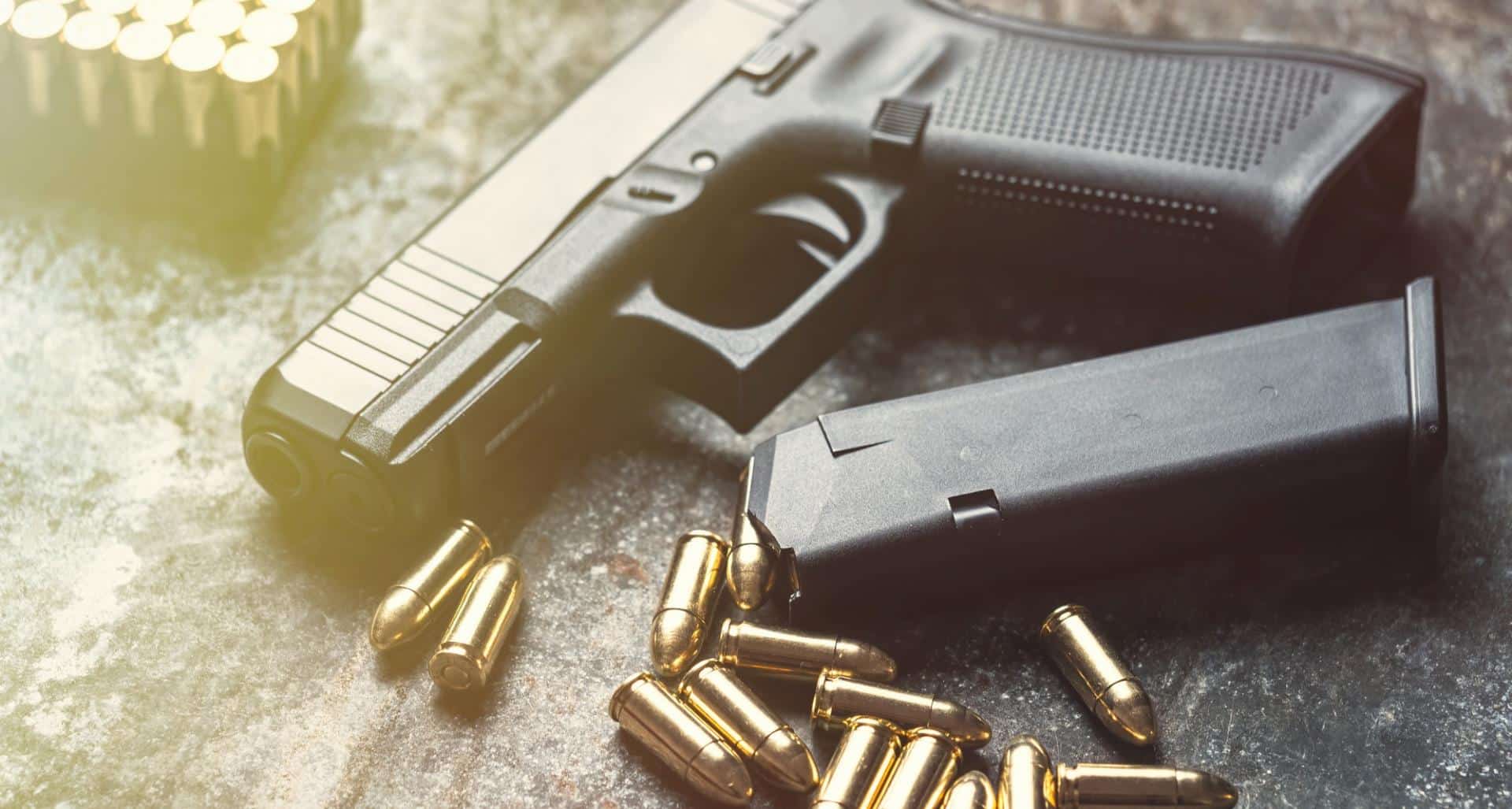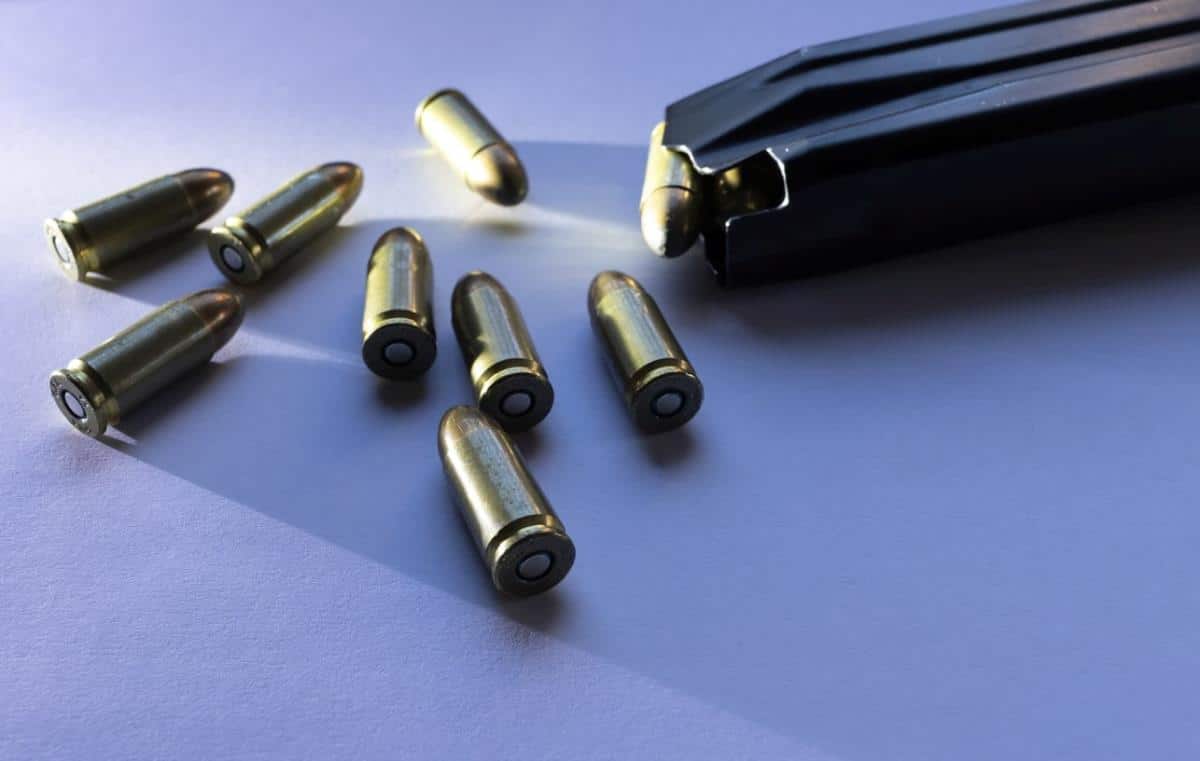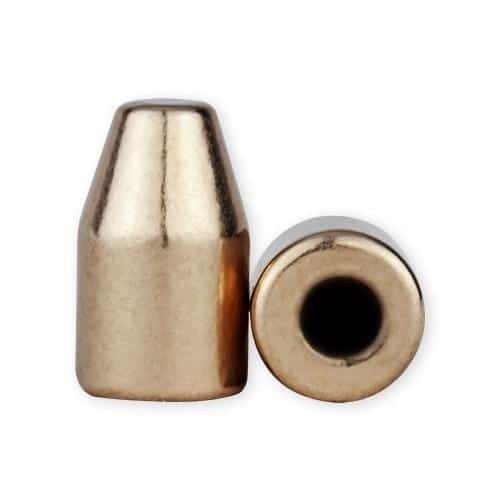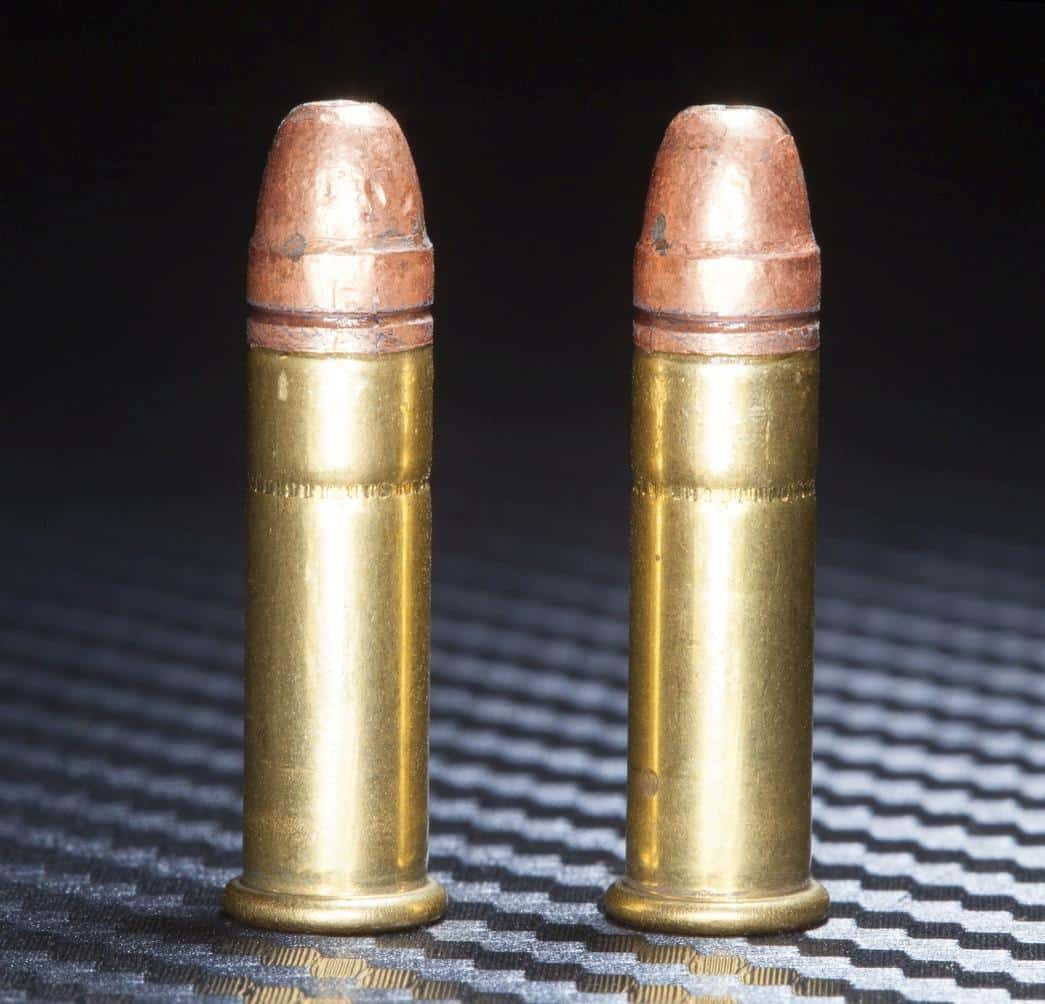Your cart is currently empty!

The Types of 9mm Bullets
The 9mm Luger is perhaps the most popular centerfire cartridge on the market today. It is the number one choice of law enforcement officers, ideal for self-defense, and wildly popular among competitors. Once only for handguns, 9mm is now the top choice in pistol-caliber carbines and submachine guns as well. It’s low recoil, accuracy, and low cost have made it the darling of the American shooting public.
There are a number of different bullets you can load in your 9mm ammunition. Choosing the right one is important for safety, accuracy, performance, and specific use cases. Bullets of incorrect diameter won’t get a proper gas seal and will lose velocity and be inaccurate. Some handguns will only feed bullets of a certain shape. Certain bullet designs, like hollow points, are intended for specific purpose, like self-defense.
This article will discuss 9mm bullets, including the history of the 9mm cartridge, the different types of bullets offered by Berry’s Bullets, other common types of 9mm bullets, and choosing the right one for you needs.
Brief History of the 9mm Bullet

With so many cartridges designed right here in the U.S. of A., the 9mm Luger is something of an unlikely candidate to become America’s most popular cartridge. Designed in 1901 by Georg Luger, 9x19mm was the pistol cartridge of the Germans in WWI, and the Nazi Party in WWII. It was not met with much fanfare here at home until about the 1980s – the .45 ACP cartridge was king back in those days. Due to the Hague Convention, which outlawed expanding bullets on the battlefield, the larger diameter of the .45 was perceived as a huge advantage.
Then the 1980s and the “Caliber Wars” days came along. More pistols were introduced in the 9mm caliber, many of them holding 15 or more rounds in their magazines. Law enforcement agencies including the FBI took notice and began issuing these semi-automatic pistols. So did the U.S. Military; in 1986 the Beretta M9 was adopted as the official service pistol of the U.S. military. The cartridge was adopted by NATO to become designated the 9x19mm NATO. The stopping power debate between “big and heavy, low capacity,” and “light and fast, high capacity” raged on through the early 2000s. The .40 S&W was thrown in the mix and complicated things even further with the ”compromise caliber.”
By 2010 or so, the debate had largely been settled, and 9mm became the predominant cartridge in not only the military, but also in law enforcement. Most federal LE agencies issue 9mm pistols, and the military recently adopted a new service pistol and stuck with the 9mm. Civilians flocked to it for its cheap cost, light recoil, and the small guns that chamber it. Nowadays, if you run across a pistol, it as likely to be a 9mm as just about every other caliber put together.
Different Types of 9mm Bullets from Berry’s

There are a number different 9mm bullet types you can load. Different rounds make the 9mm incredibly versatile. The bullet type you choose depends on a number of factors, including your use case and your firearm. Let’s take a look at some bullet types.
Round Nose: This is the most common type of 9mm bullet on the market. The round nose has a rounded profile that is a boon to reliable feeding. The rounded nose tends to slide smoothly over feed ramps and find its way into the chamber easily. This type of bullet should function in any 9mm-chambered firearm.
Hollow Base Bullets: The hollow base feature can be combined with other bullet styles, like round nose. The hollow base reduces weight, allowing a bullet to retain the same weight while being longer. This allows a longer surface area to engage the rifling, which can lead to greater accuracy. This can also allow you to load a lighter bullet, yet still have a bullet that is long enough to stabilize in flight.
Flat Point: Flat point bullets look as though the tip of the bullet was cut off; they angle up sharply to a flat point that is a little smaller than the overall diameter of the bullet. The flat nose bullet cuts a clean hole in paper targets. This can make it easier to see if a bullet cut a scoring ring, giving competitors a slight edge. Flat point bullets may not feed in some 9mm handguns, so it’s best to test them first.
Hollow Point: Hollow point bullets have a cavity at the leading edge of the bullet. Hollow point handgun bullets are typically used for defense rounds. When driven at sufficient muzzle velocity, the cavity is intended to fill with soft tissue, causing the bullet to expand. This limits over-penetration and creates a larger wound channel
Other Common Types of 9mm Bullets
There are other types of 9mm bullets, as well.
Plain Lead: Plain lead bullets have no coating. These have some significant disadvantages. First, they are objectively dirtier. They lead the barrel and create more residue over the rest of the gun. When shooting indoors they can even cause a health hazard, as vaporized lead is then inhaled. Some guns restrict the use of lead bullets, like the Glock family of pistols with hexagonal rifling; the soft lead can clog up the rifling leading to poor accuracy.
Frangible: Frangible ammunition is typically used for indoor training when shooting bullet traps. These bullets are designed to fragment essentially into dust on impact. While ideal for shooting inside a shoot house or other dynamic training environment, these bullets typically suffer from poor accuracy at longer ranges, and are extremely expensive.
FMJ/JHP: Full Metal Jacket and Jacketed Hollow Points share one thing in common, a jacket. This means the bullet has a copper jacket that starts in manufacturing as a cup. The cup is shaped, then filled with a lead core, and formed into its final shape. The next section will talk about the pros and cons of this, and compare it with plated bullets.
Soft Point: Soft-point bullets are typically jacketed and have some exposed lead at the tip. The concept behind them is that the soft lead will begin to deform on impact, causing expansion and more kinetic energy on target. Bullets like this are most often used for hunting, and aren’t terribly common in the 9mm caliber.
Plated vs Jacketed Bullets

In the last section we discussed how jacketed bullets are made. Jacketed bullets are ideal for premium applications, like law enforcement ammunition or hunting ammo. There is more room for customization and enhanced features with jacketed bullets. This comes at a cost, though. Jacketed bullets are far more expensive than plated bullets.
Plated bullets are made through a different process. The lead bullet is first formed, being slightly undersized for the bore. Thousands of bullets are then lowered into a vat containing ingots of copper. They are subject to a slight electrical charge, and the copper is electro-plated onto the bullets. This has the advantage of plating the entire bullet. Many jacketed bullets leave the base open, which allows lead to become vaporized, which is a health hazard, especially when used indoors for long periods of time. Electroplating is also far less expensive, making plated bullets a very economical option that still offers outstanding quality.
Choosing the Right 9mm Bullet for Your Needs
When choosing the 9mm bullet for you, you need to factor in your purpose, and how that bullet meets your purpose. First and foremost, the bullet should feed reliably. Regardless of whether you are a serious competitor, a home defender, or just a weekend plinker, reliability is paramount. Unreliability due to poor feeding is frustrating at best, and a danger to your life at worst. Above all, the bullet must feed reliably.
You should also consider legality. Though rare, in some jurisdictions, hollow point bullets are illegal. You don’t want to run afoul of the law by choosing the wrong bullet. Chances are, if you live in one of these jurisdictions you know about it, but if you have any doubt whatsoever, double-check.
Finally, you want to consider your purpose. Are you shooting competitively on paper targets, like IDPA or USPSA? If so, a flat nose bullet is likely ideal for you. It will make these impacts on scoring rings easy to see, and increase your odds of an “A-zone” or “Down 0” hit. Are you just plinking? If so, standard round nose bullets are probably going to be your best bet, as they have the best chance of feeding reliably in any gun you want to put them in.
The Berry’s Bullets Difference
Berry’s Bullets is the leader in plated, 9mm bullets for competition and target practice. We offer a wide range of bullet styles including round nose, flat point, hollow base, and hollow point in popular bullet weights including 100-, 115-, 124-, and 147-grain. In addition to 9mm bullets, we also manufacture bullets in a myriad of other calibers, styles, and weights. Our bullets are manufactured to exacting standards. Berry’s is family-owned business that focuses on exceptional quality, friendly customer service, and Berry’s Bullets are proudly made in the U.S.A.!
Closing Thoughts
Choosing the right bullets for your needs comes down to knowing your needs, and understanding how different bullets meet those needs. What do you need a bullet to do? As we have discussed, not all bullets are built the same. We’ve given you a good look at how different bullets work, now it’s up to you to examine your use case, and see how they apply to you. We encourage you to look into your specific needs and check out Berry’s Bullets because chances are, we have a bullet that can do what you need it to do.
